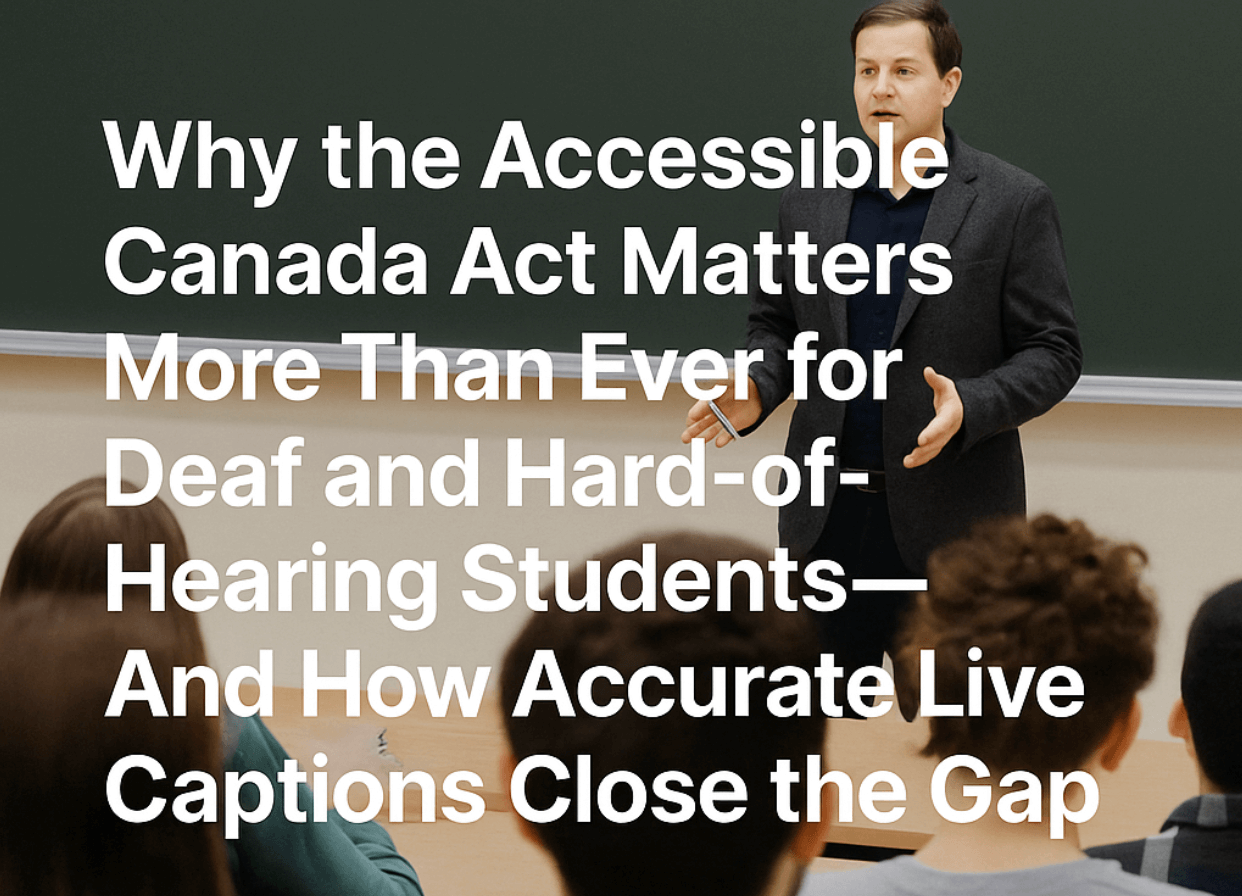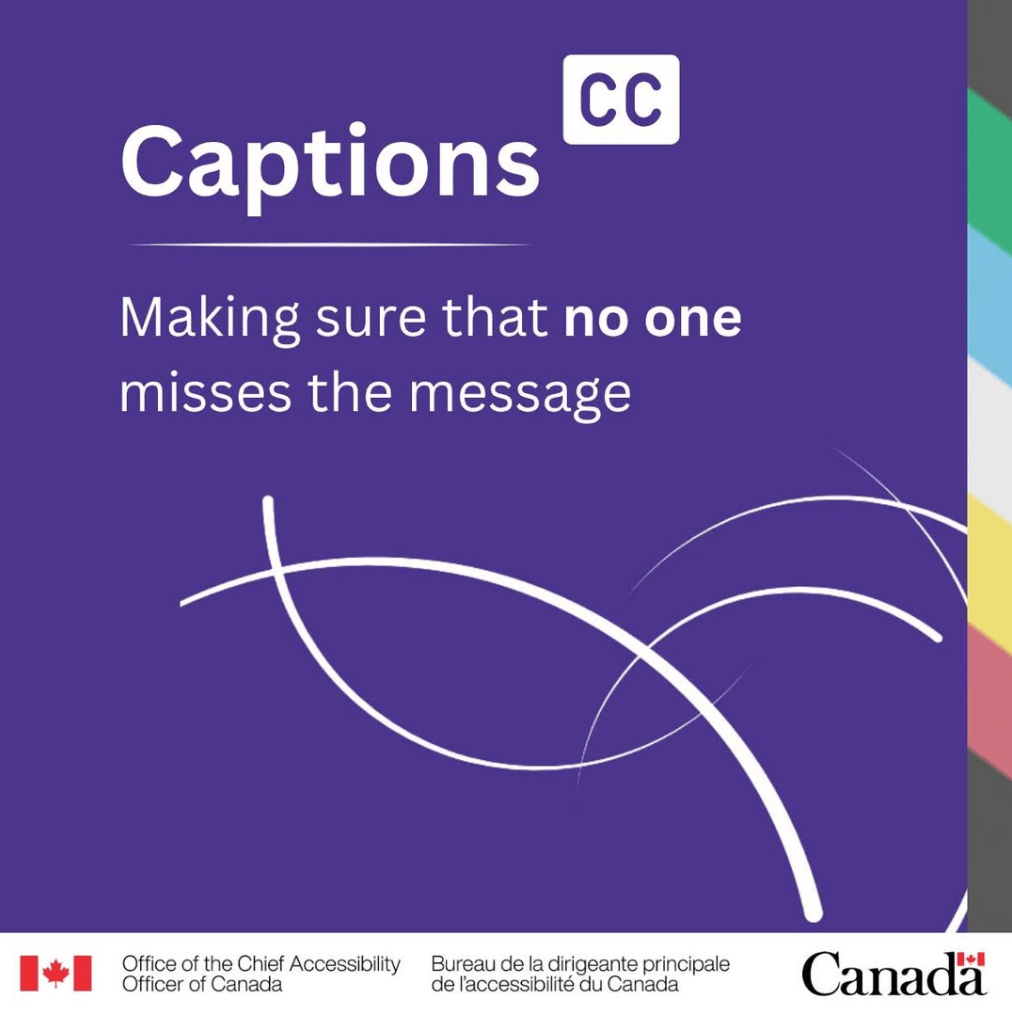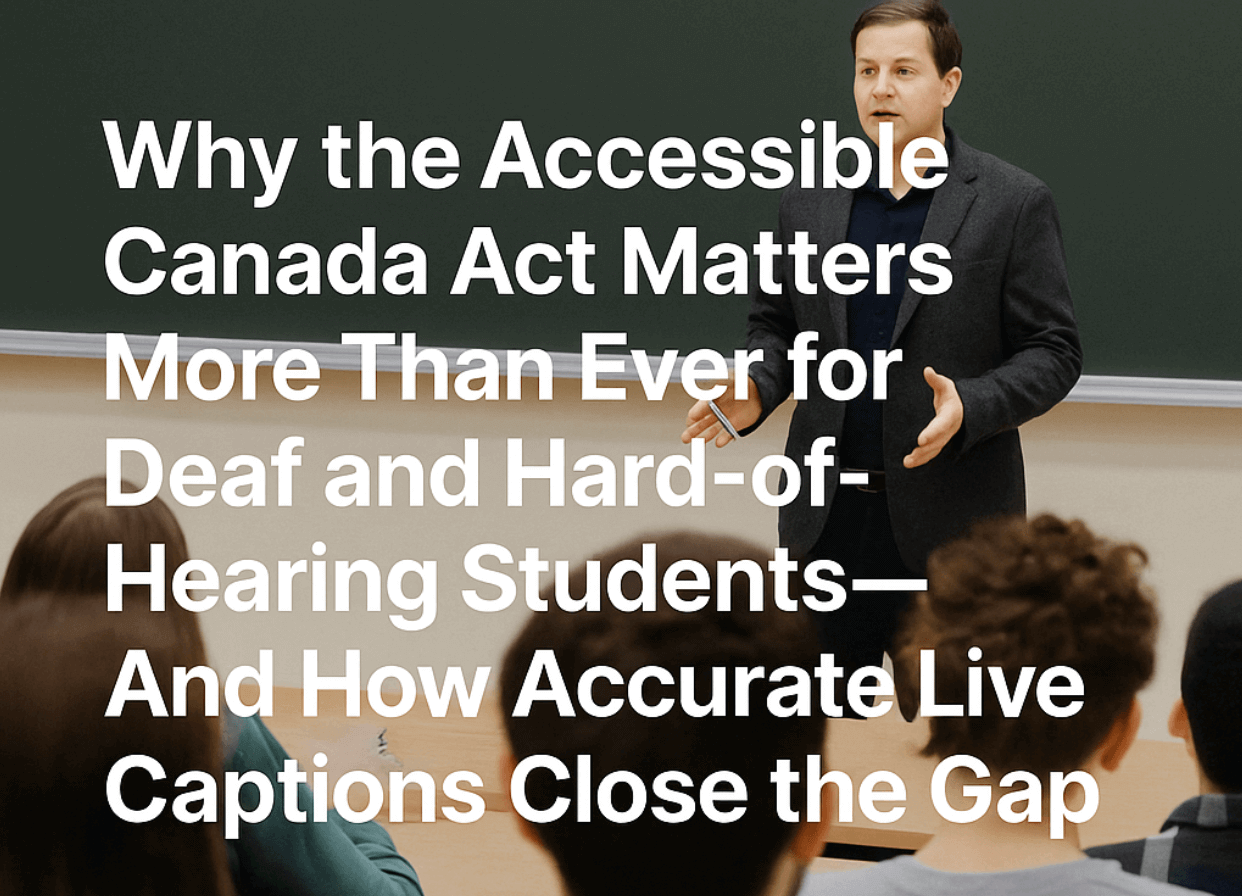
Scattered across the audience of lecture halls, some students stare at the mouths of professors, lip reading and just catching fragments. Those are the Deaf and hard-of-hearing students that haven’t yet asked for accommodations. Other DHH students use CART. Yet others have remote or in-class interpreters.
No matter what their choice (or lack of) accommodation, the system wasn’t built with all of them in mind. Immediately after class, their accommodations disappear into the sea of students with no easy way to communicate with their hearing counterparts.
Canada says it wants to fix that. The Accessible Canada Act, enacted into law in 2019, promises a barrier-free country by 2040. But here, right now, in classrooms where the future is being shaped, accommodations don’t cover the communication needs for all students at all times.
The ACA’s Vision for Education
The Accessible Canada Act (ACA) isn’t purely legislation — it's a relatively new and formidable law that intends to remove barriers in education. It also extends beyond education to transportation, employment, and communication.
In fact, Stephanie Cadieux, Canada’s Chief Accessibility Officer, is well aware of the importance of barrier free communication and how captions and sign language play a critical role in breaking those barriers: “Inclusion is in the details. Captions help make sure no one misses out on the message.”

For universities, it means creating learning environments where every student, regardless of hearing ability, has equal access to academic content and to the social connections that make campus life meaningful. That’s a pretty big “and”.
For Deaf and hard-of-hearing (DHH) students, that commitment extends far beyond classroom notes. It’s about fast and accurate real-time access to knowledge, active and immediate participation in discussions, and inclusion in the subtle, unscripted, and casual moments that shape student life.
The Gaps in Current Accommodations
Interpreters and CART captioning services are vital — but they often have limits.
- Scheduling constraints mean services aren’t available for impromptu meetings or group study sessions. And sometimes cancellations for some services means no accommodations whatsoever and isolation from learning.
- Technical vocabulary gaps can make even real-time captions stumble, especially in specialized fields. And a substitute interpreter may not quickly get up-to-speed on a specific class' vocabulary or jargon.
- Social isolation can occur when communication tools vanish the moment the lecture ends. And even impromptu conversations at the end of a class outside the reach of accommodations can be lost. Think: Final exam date change. Last minute assignments. A core piece of info that might be on an exam or assignment.
- Costs can also be burdensome for the budgets that shape current accessibility services on campus. In the age of AI, modern technology, if deployed well with accessibility built in, can dramatically reduce costs associated with communication accommodations.
Accommodations are often an event-based service — covering a class or lecture — but not life-based, following students into hallways, cafeterias, labs, or late-night study sessions. The ACA aims to address barriers broadly, but bridging these gaps requires smart tools that go beyond the classroom.
Why Live Caption Accuracy Is Non-Negotiable
For DHH students, captions aren’t a “nice to have” — they’re the difference between being informed and being left out. And inaccurate captions, aka craptions, can be worse than none at all. A mistranscribed term in a chemistry formula, a missed joke that breaks the social ice, or a garbled sentence in a heated debate can derail understanding and connection.
High-accuracy captions mean students don’t have to second guess what was said or assigned. Accurate captions mean information can be trusted. It means learning the right information without worrying that you’re committing to memory info that will harm your grades or the foundational underpinnings of prerequisite knowledge for future classes and eventually jobs.
High accuracy also means the confidence to participate in class discussions without being left behind, which translates to full academic inclusion.
How Ava Bridges the Gap the ACA Leaves Open
While the ACA provides the mandate, Ava delivers the complete experience. Unlike generic transcription services, Ava is built specifically to serve the Deaf and hard-of-hearing community, prioritizing accuracy, speed, accessibility, and flexibility.
Here’s how Ava uniquely supports Canadian universities and their DHH students:
- Real-time captions with exceptional accuracy, even in fast-paced academic discussions, Ava captions keep up with the discussion in real time. Being behind by just a 4 or 5 seconds can throw a DHH student completely out of context.
- Custom vocabulary integration for specialized academic fields, ensuring precision in technical terms. You really don’t want to have your paradigm misrepresented by a pair of dimes. Bad captions wreak havoc on scientific terms.
- Always-on accessibility, so captions follow students beyond lectures into group projects, office hours, and casual campus interactions. With a good mic, Ava can pick up any conversation.
- ACA compliance support, helping universities not only meet but exceed legal accessibility benchmarks — both for live captions and for media transcriptions.
- Post-conversation transcripts mean students can focus on the live captions without having to take notes, which helps comprehension as well as the ability to better participate. Transcripts provide the peace of mind for students to focus on the present lecture or discussion.
- DHH-specific features mean well-thought out live captioning that work specifically for DHH students. Ava’s captions scroll with the conversation, can identify different speakers, has an expandable caption window for computers, and picture-in-picture for mobile so captions can continue on top of any active app, typeface controls for size and contrast, and even translation.
Make Your Access Real-World
Picture a Deaf student in a psychology seminar. The discussion veers into pop culture references and nuanced metaphors. Those are the moments when interpreters might need to pause or captions might falter. With Ava, every word lands in real time. The student laughs with everyone else. They respond in the moment.
There’s accessibility and there’s belonging — not because someone “made room” for them, but because the space was already built to include them. Ava’s delivers accessibility but is built for belonging.
That’s what accessibility should feel like.
The ACA sets the vision. Now it’s time to make it real. If you’re an educator, accessibility coordinator, or student advocate, you can make your campus a place where Deaf and hard-of-hearing students never have to choose between academic success and social connection.
Learn more about Ava for Higher Education →




